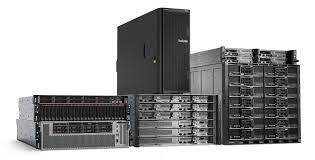
Edge servers act as micro-data centers, delivering computing power for an edge cloud.
An edge server is a type of device which provides an entry into a network. Edge devices are mostly placed inside the internet exchange point. This allows different networks to connect and share smoothly.
How do Edge Servers Work?
An edge server sits between the interfaces of two different network points. These servers work between the producers and consumers of data.
There are four types of edges:
Let’s see:
- Device edge (this server is a component of the end-user device).
- On-prem edge (nodes located in physical network or facility).
- Network edge (network-specific nodes like base stations or telco data centers).
- Regional edge (this server comes from a traditional local data centre).
Edge servers enable corporations to expose a much smaller percentage of their environment to outside networks. It reduces the risk of security breaches simultaneously.
These servers are specially designed to fulfil more stringent requirements than traditional servers, especially when their primary goal is to support better particular use cases like industrial sensors or networked surveillance cameras.
Edge computing takes care of jobs that require near-real-time processing, unlike the hybrid computing model, where centralized computing takes care of resource-intensive tasks.
With edge servers, businesses can avoid issues which affect speed and connectivity. This technology keeps data on the edge of devices, making it easy to access.
Types of Edge Servers:
Edge servers are crucial in edge computing by providing computing resources. It allows the objective of reducing latency. Typically, there are two types of edge servers given below:
Content delivery network(CDN) edge servers:
A CDN edge server refers to a computer with cached versions of static content from an origin server. Any organization can deploy CDN edge servers at multiple points of presence across a content delivery network.
CDN edge servers reduce the workload on origin servers and reduce user latency.
How does it work?
- In the first step, the client requested a web resource with static content by browsing to a given URL.
- The client request is sent to the website’s CDN automatically.
- This CDN uses DNS technology to determine which CDN edge servers which’s geographically closest.
Edge Computer Servers:
This type of server offers to compute resources at the network’s edge. An edge compute server provides functionalities needed for IoT apps, unlike CDN servers which only deliver static web content.
These servers provide compute resources at the network edge. Similar to CDN, edge servers are strategically deployed to reduce latency.
Bottom Line:
Edge computing moves analysis and storage nearer to different data sources. It includes individuals, places and objects, respectively. With the introduction of connections such as network segmentation and composable networking, 5G is coming with new technologies and user-centric networks.
The continuous infiltration approach has been shifted from “network-aware application design” to “application-centric network provisioning”. This represents a significant development in network architecture.
Since data is kept close to the edge and away from centralized servers, edge computing can offer improved security and better privacy safeguards.



